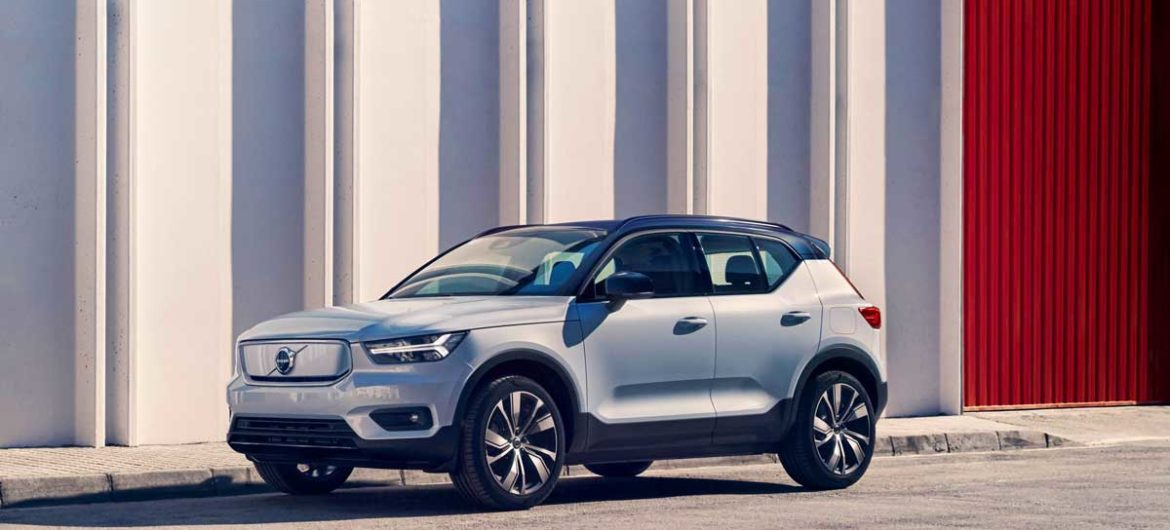The Swedish automaker presented the XC40 Recharge, which can go from 0 to 60 mph in 4.9 seconds, and reach around 200 miles on a charge.
When Volvo chose 10 years prior that it needed to make a push on wellbeing, the automaker made an arrangement to kill passings and genuine wounds in its vehicles by 2020. In spite of the fact that it conceded not long ago that the organization wouldn’t arrive—putting some fault on drivers’ “terrible conduct”— the present Volvos offer a pack of creative security frameworks. They work to relieve wounds when vehicles go off the street, issue occupied driving cautions, and even watch for moose. Presently the Swedish automaker (possessed by China’s Geely) is focusing on another goal-oriented objective—the carbon impression.
By 2025, Volvo intends to diminish its emanations by 40 percent, focusing on assembling procedures, tasks, and even the transportation of new vehicles from its production lines. The autos themselves will have an impact as well. In Los Angeles on Wednesday, Volvo flaunted its first all-electric vehicle, a battery-controlled adaptation of its XC40 little SUV, named the XC40 Recharge.
Volvo will keep on turning out new EVs in coming years, and would like to make a large portion of its deals from completely electric autos by 2025. The rest will be half and halves, as Volvo plans to offer some type of zap in the entirety of its models. The Recharge name will apply to all models that are either completely electric or have module ability. Starting Wednesday, customers who buy a module cross breed Volvo, or in the long run the completely electric one, will likewise get a time of free charging, as a discount for the normal power costs in their area.
“Stopping movement is not the answer to solve the climate issue,” says Volvo CTO Henrik Green. “We want to offer people the freedom to move in a sustainable way. You cannot and will not solve the climate problem by gradually by improving petrol and diesel engines. Pure electric cars running on and built using renewable energy are the only cars that can really do it.”
The XC40 Recharge utilizes two 150 kW engines, one on every pivot, and a 78 kWh battery pack that is implanted in the floor. The framework will create 408 hp and an expected 442 pound-feet of torque, sending the little SUV from 0 to 60 mph in 4.9 seconds. At a 150 kW DC quick charger, the vehicle should arrive at 80 percent charge in less than 40 minutes. Range won’t be known until the EPA tests the vehicle, however Volvo gauges it will arrive at 248 miles under the European WLTP testing plans, which ordinarily means around a 200-mile extend in the US, Volvo said. The organization intends to start deals one year from now beginning at about $50,000, after government motivating forces.
Volvo hasn’t furnished numerous subtleties to go with its more extensive carbon vows. The arrangement will incorporate improving proficiency of its activities and expediting providers board, as it changes over to wind, sun based, and hydro control for its assembling, as indicated by Green.
Green says the organization would give close consideration to sourcing batteries, including guaranteeing that they can be reused—however he didn’t show in the event that it had an arrangement set up to effectively recover the batteries toward the finish of their lives. He additionally makes reference to that Volvo stayed at work past 40 hours to guarantee that the new vehicle would be as sheltered or more secure as different Volvos, despite the fact that it needed to update the wellbeing framework without a front-mounted motor and it needed to ensure the battery pack underneath the floor. It hasn’t yet given subtleties on either technique.
There are slight corrective contrasts between the fuel controlled XC40 and the new EV variation—there’s a smooth spread instead of the grille, and a couple of different changes to recognize it. Be that as it may, the inside experience vows to be a huge redesign. Volvo guarantees an infotainment framework with an interface “comparable to a cell phone” on account of a joint effort with Google. The framework will utilize common language voice directions that the organization guarantees will “work each time you use it,” and it will utilize computerized reasoning to learn driver inclinations and sharpen its collaborations after some time. The vehicle will likewise remain commonly fresher by means of over-the-air refreshes, much like Tesla does with its autos.
Disclaimer: The views, suggestions, and opinions expressed here are the sole responsibility of the experts. No Times World USA journalist was involved in the writing and production of this article.




